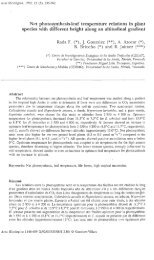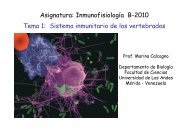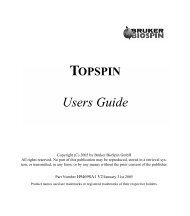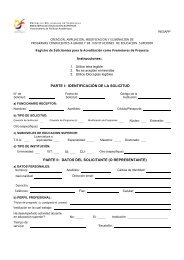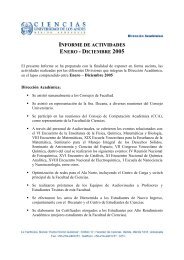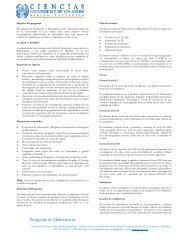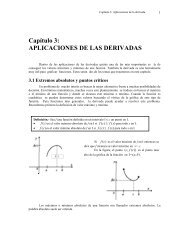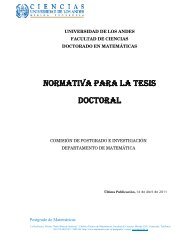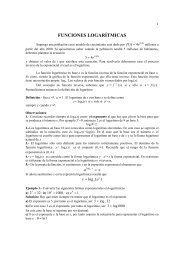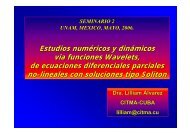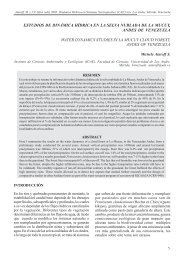Diffusion Manual Outline
Diffusion Manual Outline
Diffusion Manual Outline
You also want an ePaper? Increase the reach of your titles
YUMPU automatically turns print PDFs into web optimized ePapers that Google loves.
14<br />
2. Fill out the table accordingly.<br />
First you must choose the type of pulse sequence that was used.<br />
STE is the stimulated echo pulse program (stegs1s, ledgs2s)<br />
STEbp is a stimulated echo with bipolar gradients (ledbpgs2s)<br />
DSTE is the double stimulated echo (dstegs3s)<br />
DSTEbp is a double stimulated echo with bipolar gradients<br />
Enter the new process number (procno) where the DOSY analysis will be stored. Make<br />
sure you do not overwrite the raw data.<br />
The Row start to end should indicate how many steps were in the gradient ramp file.<br />
The Col start to end should indicate the number of points representing each spectrum<br />
that will undergo the inverse Laplace transform.<br />
The threshold value indicates the lower intensity limit at a particular chemical shift for<br />
which the transformation will occur.<br />
There are three different modes offered for data analysis. The option monoexp will fit<br />
the decay of intensity at each chemical shift with single exponential decay curve and<br />
yield a single diffusion coefficient per chemical shift. This option should be used if it is<br />
known that the components within a mixture are monodisperse and a single diffusion<br />
coefficient exists. The option biexp will fit the decay of intensities with biexponential<br />
decay curve and yield a possible two diffusion coefficients per chemical shift. This<br />
option should be used if it is thought that the diffusion at each chemical shift cannot be<br />
adequately represented by a single diffusion coefficient. This would be the case if it is<br />
known that there is chemical shift overlap with various components within a mixture.<br />
The option CONTIN is used when the components within a mixture are known to be<br />
polydisperse and are known to diffuse with a distribution of coefficients. Examples of<br />
polydisperse species include polymers, micelles and droplets. So within a DOSY<br />
spectrum such species will yield Gaussian distribution of diffusion coefficients with<br />
increased width.<br />
Fit offset should be set to yes if signal intensity has not decayed to 2-5% of the original<br />
signal intensity.<br />
SI (F1) indicates how much zero filling takes place in the diffusion dimension of the<br />
pseudo 2D DOSY experiment.<br />
The value in Sdev indicates a factor by which the standard deviation is multiplied. If the<br />
experimental data has a relatively high signal to noise ratio the Sdev value can be reduced<br />
(0.01) to obtain sharper Gaussian distributions of diffusion coefficients




